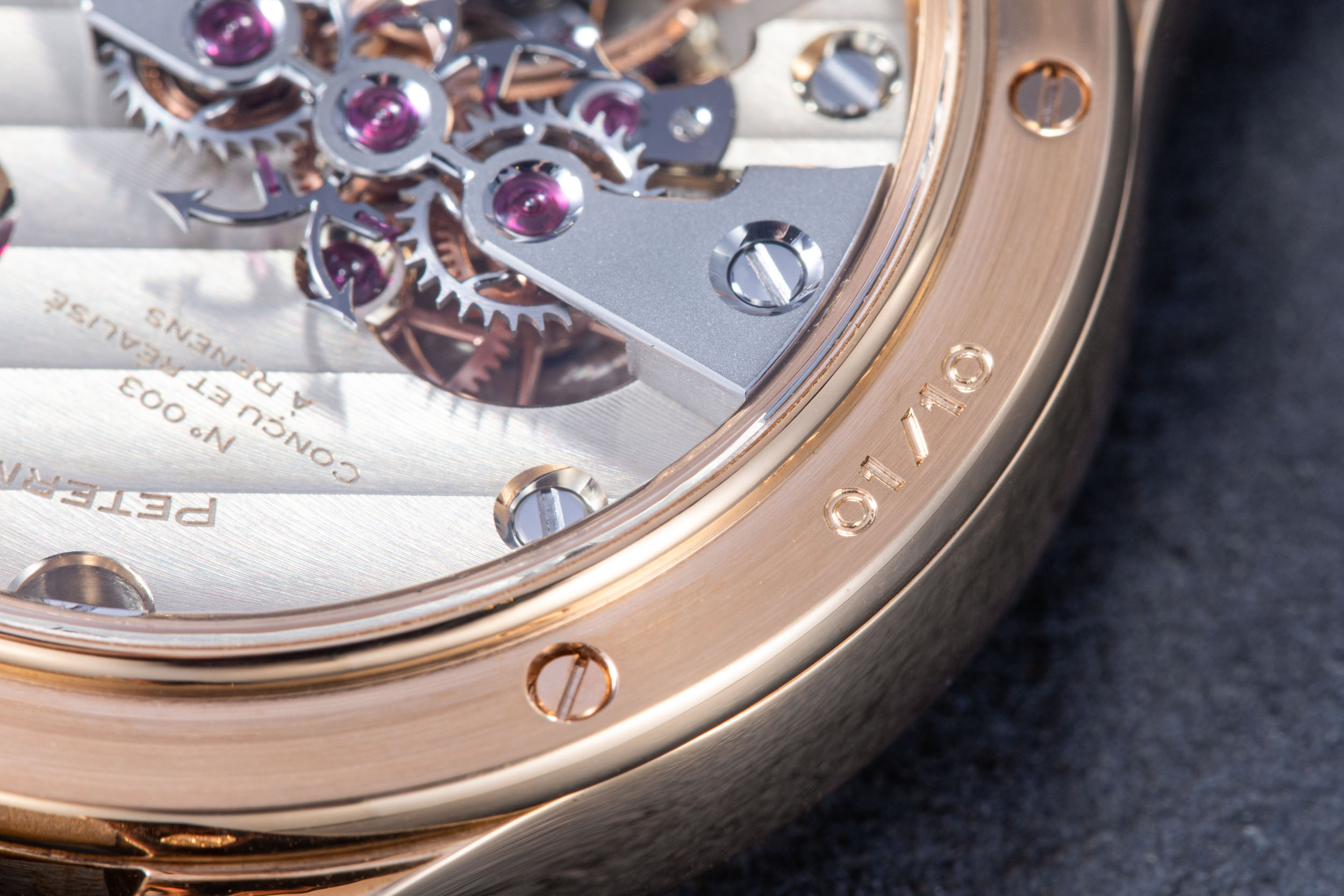Interviews • 07 Oct 2020
Petermann-Bédat on Independence
“We founded Petermann Bédat to create complete watches as we intend them. Where craftsmanship is dedicated to an impossible aim, perfection! This is the goal we have in mind, when finishing by hand every detail on our movement even the one that you will never get to see. Why? Because we love our job as much as our ancestors did. It’s exactly for this reason we chose the Gafner system for our first watch, it requires the best mastery to adjust while offering great room for creativity. If we have to define our work with one word, it would be craftsmanship.” – Gaël Petermann & Florian Bédat
Before we get into discussing the Dead-Beat Seconds watch, we’d love to hear about how you both got into watchmaking?
Gaël: In Switzerland when you are 14, you have to decide if you want to continue with school or do an apprenticeship. I knew I didn’t want to continue with my studies – my father is a tractor mechanic, so he told me about watchmaking and how it could be good as there’s opportunities to work for brands such as Jaeger-LeCoultre and Audemars Piguet. So, when I was 15 I went to the Watchmaking School of Geneva and was there for four years.
In the 2nd grade I was in the same class as Florian. We learnt about bevelling and other decorative techniques, and enjoyed each others company as it was like a small competition between us to see who could make the perfect lever or spring. Around the same time, I asked my teacher in the complication department (who’d worked at Patek Philippe for 25 years) who was the best watchmaker, he said Philippe Dufour. I was only 16 at the time and hadn’t heard of him. But then I saw his work and noticed how beautiful it is. Of course, I wanted to go work for him, but that’s not possible [laughs].
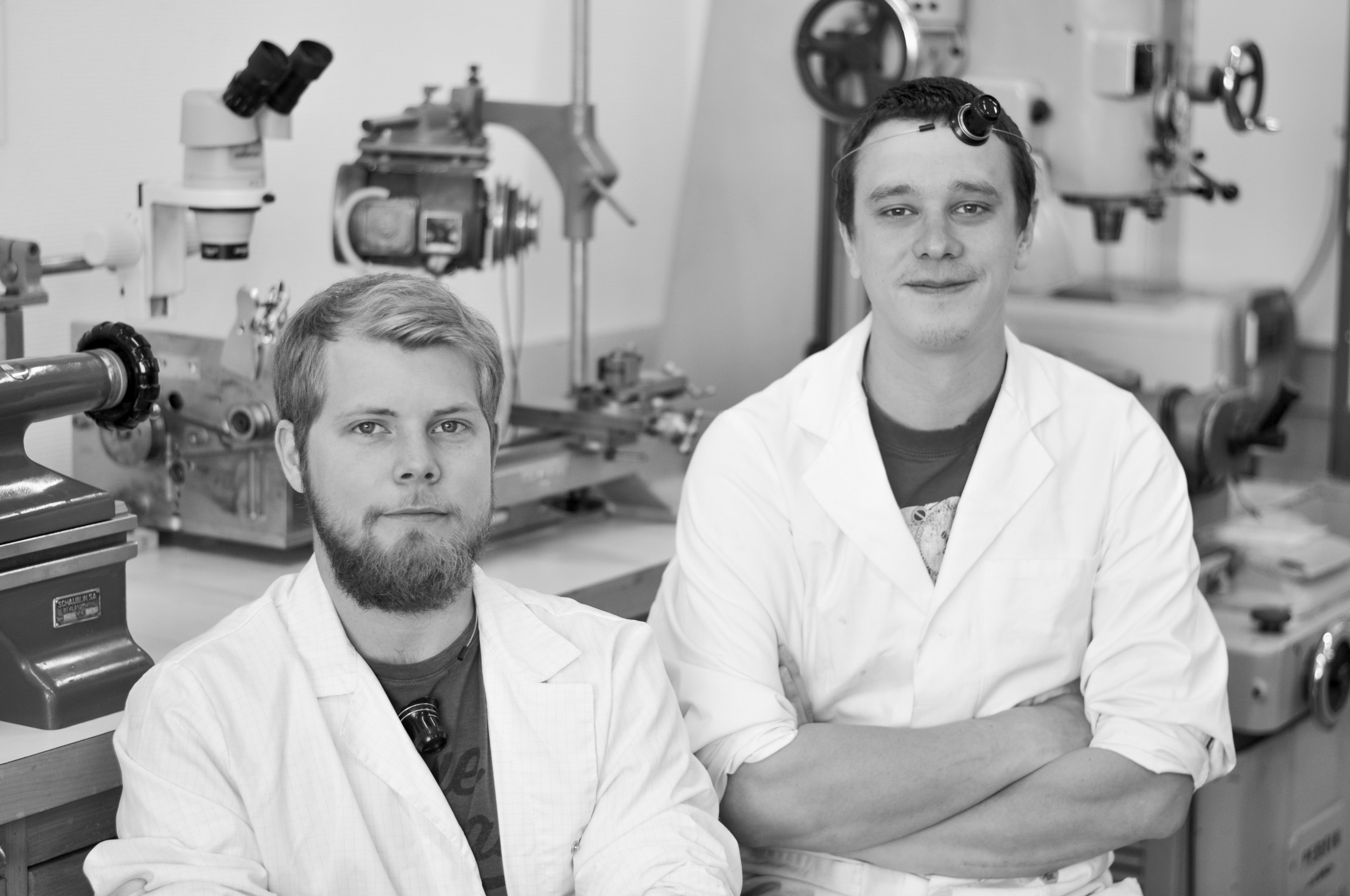
I soon discovered A. Lange & Söhne and realised I had a better chance of working with them than with Dufour. So, I went to work for them when I was 19. This was when A. Lange & Söhne were searching for a lot of talent to join them. Fortunately, they accepted me after taking a test. But it really is very different to watchmaking in Switzerland. For example, if you work for Patek Philippe, at the beginning you would probably work in the encasing department and then after five years you’d have the chance to work on something more challenging in the complication department. In Germany it’s completely different, they were really happy with my work on the Lange 1 series (the old Lange 1) and knowing that I wanted to work in the chronograph department they said “ok but we need someone to work on perpetual calendars”, and so I said “ok I’ll take that!”.
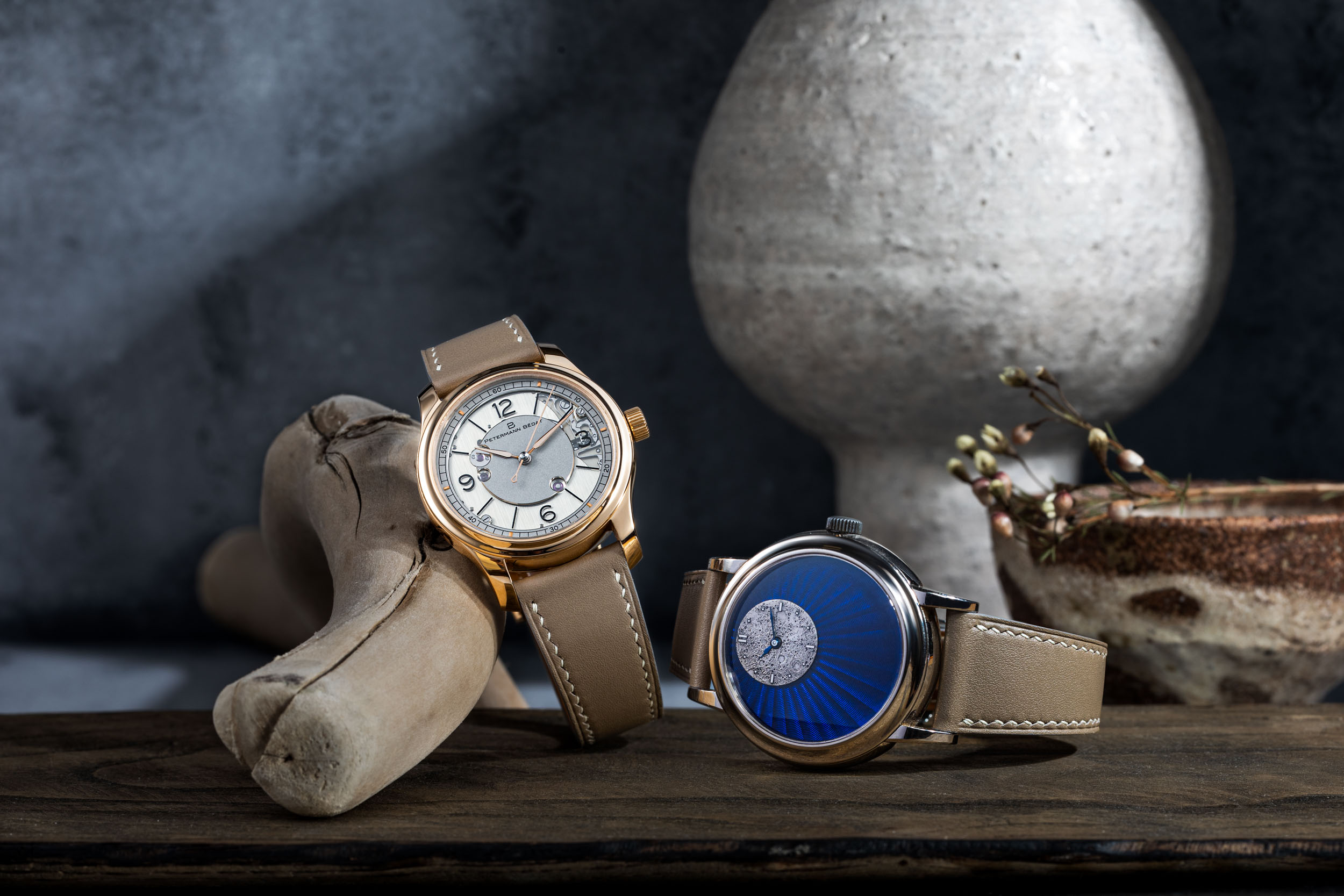
So, I went to work on perpetual calendars and annual calendars for a year. And after that, they informed me that there was a workbench available in the chronograph department. After some time there my boss told me that I’m doing well and if I stay a little longer, I’d be able to work in the atelier – the prototype department. But, if I did, I’d have to stay for at least 5 years. It’s a long time at that age. After thinking about it, I decided to come back to Switzerland in 2014, and soon found work with Andersen Geneve. I had good impressions of Andersen Geneve as our teacher in the 4th grade at school had worked there for 16 or 17 years. I could see it being a great place as he also worked for Christie’s on restoration.
I had the opportunity to dedicate 50% of my time to Andersen Geneve and the remainder to my own projects in 2014. I was given the opportunity to use the workshop, so at that point I was independent. Around the time I was 22, Aurel Bacs left Christie’s to set-up at Philipps, taking his watchmaker with him. The Chief of Christie’s was very upset and said, “what are we going to do now, we don’t have a watchmaker?” I was with my teacher who worked for Christie’s and she recommended me. Christie’s said, “ok so can you start on Monday?” I was really surprised because they had complete trust in me. I really loved working there, I made a lot of connections and learnt a lot through restoration.

In 2017 I opened my own workshop here in Renens, because it’s my hometown. It’s also close to Dominique Renaud. I learnt a lot from Andersen so thought I could learn just as much from Renaud. And back then Florian had just come back from Germany, so I said if he didn’t find any interesting work I could give him some. We began in 2017 – the same year I got married – I was looking to separate my work and private life so I started a company. I asked Florian if he wanted to be an employee or if he wanted to form a partnership, which is what he wanted. So, in 2018 we founded Petermann-Bédat.
Dominique Renaud needed help for his projects, so we initially spent a lot of time assisting him. And we asked him not to pay us in money, but to trade hours – his team developed the dead-beat seconds for us. At the same time, one client from Christie’s came to us with a perpetual calendar retrograde tourbillon that wasn’t working. He saw what we were doing and asked if we were making a watch. We told him about our plan to make a dead-beat seconds and he was so interested he offered to pay in advance. Because of him and a few others we were able to start the project. To this day we want to keep up with some restoration work, but only the really special pieces. Because earlier on we had to say yes to everything, and it wasn’t always interesting work.

Florian: I was 14 as well when I had to choose between continuing my studies or taking an apprenticeship. I have always liked manual work and was especially interested in working with materials such as wood and steel. So, I finally decided and thought “why not try watchmaking?” I did an internship with Vacheron Constantin and enjoyed it so I decided to go to the Watchmaking School of Geneva. It was near my home, so it was very convenient! I did the test and started at the same time as Gaël.
I really enjoyed it, especially the stories of our teacher who had worked at Patek Philippe for 25 years. I realised early on this was the kind of job I wanted to do. So, I did the 4 years like Gaël and then I went to work for Harry Winston, which was even closer to my home [laughs]. They were searching for a watchmaker in encasing and for me that was quite a natural way to start work there. I worked at Harry Winston for 1.5 years in the encasing department and then they asked me if I wanted to go to the department where they assembled small complications. I stayed in that department for a year, up until the Swatch Group purchased Harry Winston. There was a lot of changes in our department – it was essentially the end for the small complication department. After the purchase, the small complication department went to Blancpain and Harry Winston only kept servicing and encasing. So, for me it wasn’t interesting anymore.
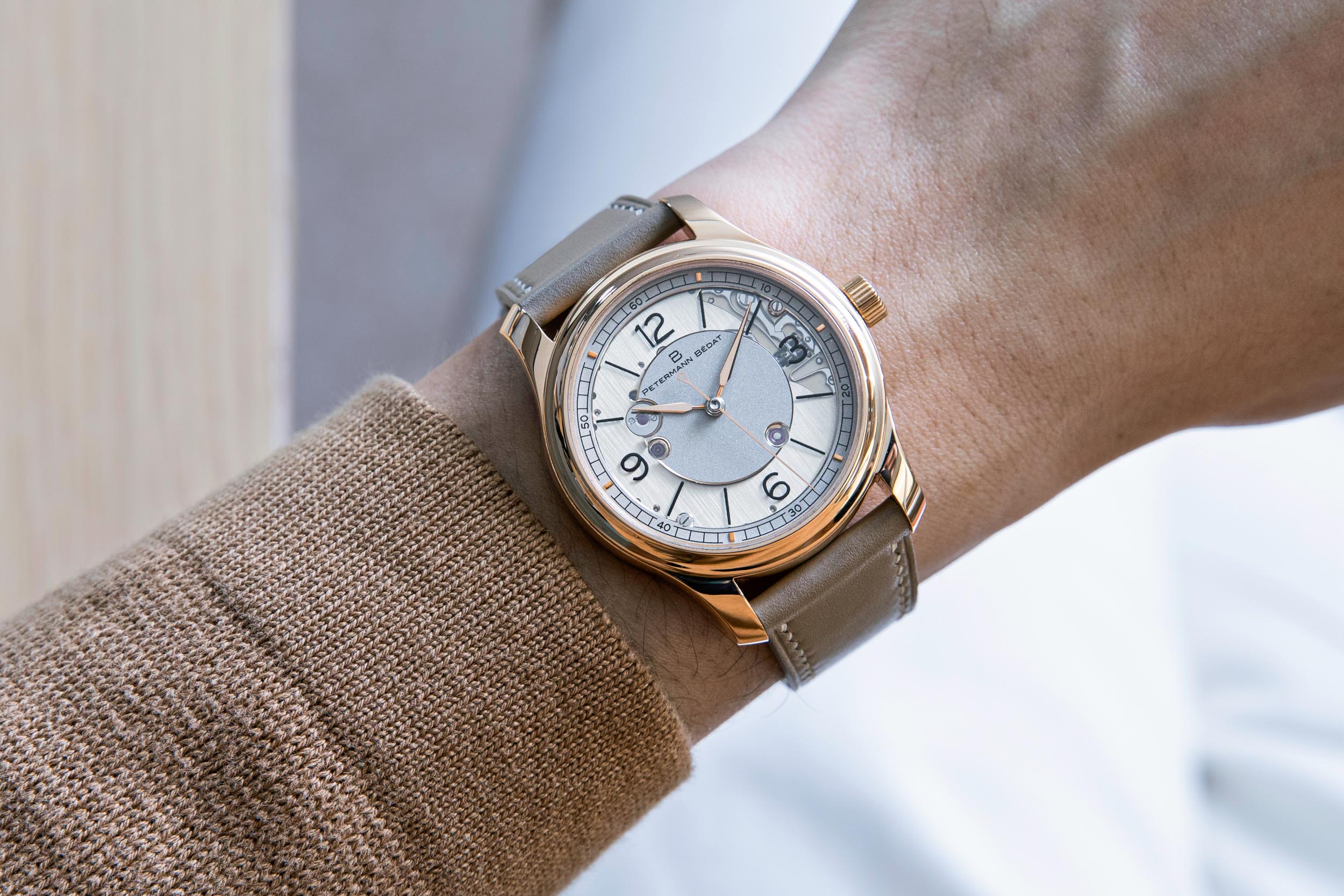
Throughout, I always kept in contact with Gaël and he always told me stories about A. Lange & Söhne and how it was incredible how they all improved so much in such as short period of time. So, I thought why not try – as Gaël said, they were searching for people from all over the world at that time. After the three-day test they offered me a contract. It was crazy!
I went to Germany in 2014 and we were both there for 6 months before Gaël went back to Switzerland to start his independent work. I stayed in A. Lange & Söhne for 2 years and worked in a department that did everything from A to Z, except the encasing for the Lange 1, the 1815 and the Saxonia. It was very interesting for me because I was able to work on every step. I learnt a lot there. After 2 years in Germany I wanted to go back to Switzerland, so I searched for jobs and found one in La Vallée-de-Joux. But after the years in A. Lange & Söhne, where everything is different to Switzerland, suddenly coming back to a big company wasn’t so appealing. I thought this isn’t for me, so I declined the contract. Meanwhile, Gaël was explaining to me about his project and I though why not. And that’s how we came to be partners and formed Petermann-Bédat. That’s our story.
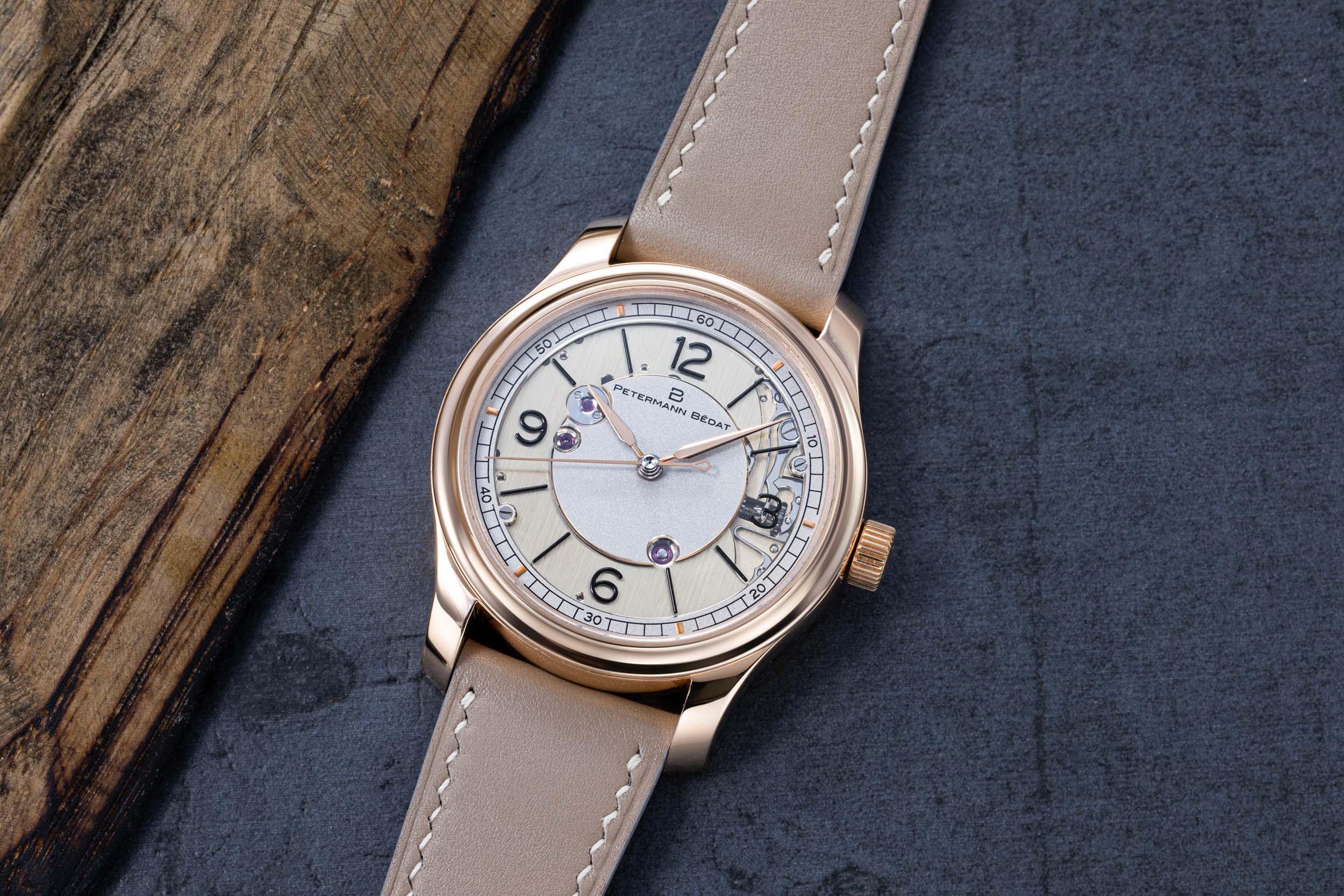
It seems you’re both motivated to keep learning?
Florian: When I started working at A. Lange & Söhne, I thought it’s crazy how much you can do there – stuff that you have to wait five to seven years to do in Switzerland to do. They trust people quite fast. That’s very good for the watchmaker, because he’s then motivated to work. For me, it was very important. In Switzerland it’s very different – it’s not bad, just different. When I started working independently, that was for me the only way to work on as many things as I did in school. So that’s ultimately why I went independent.
Gaël: I think it’s important because even if you go to work in a Swiss company and are always making the the same thing, you will learn something. And while we learnt a lot with Harry Winston and A. Lange & Söhne, we learnt just as much from old watchmakers. We made this watch because we had the opportunity. If we didn’t have this opportunity, we would continue to work on restoration, because you never stop learning. Even for us, sometimes we say, we are very young to make a watch. But of course, we will continue to learn along the way like how Rexhep worked and learnt a lot from BNB Concept and F.P Journe, but also continued to learn while making his own watch.
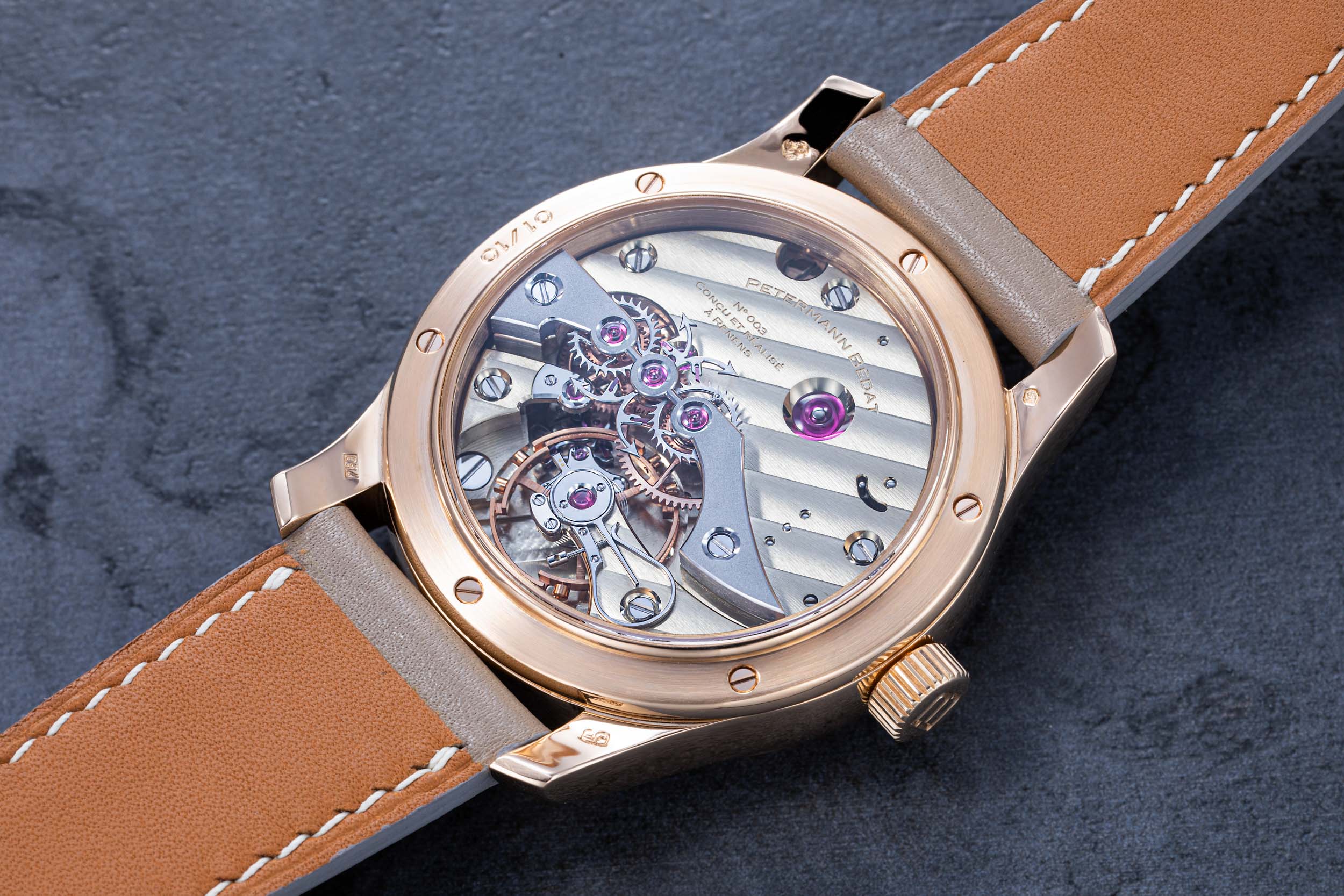
Did you come across anything particularly memorable in restoration?
Gaël: There was a grande sonnerie chronograph and perpetual calendar. It was very interesting! I think that’s the most beautiful watch I repaired, but of course we worked on a lot of minute repeaters and perpetual calendars. I also serviced newer stuff, like the 31-day power-reserve Jacob and Co.
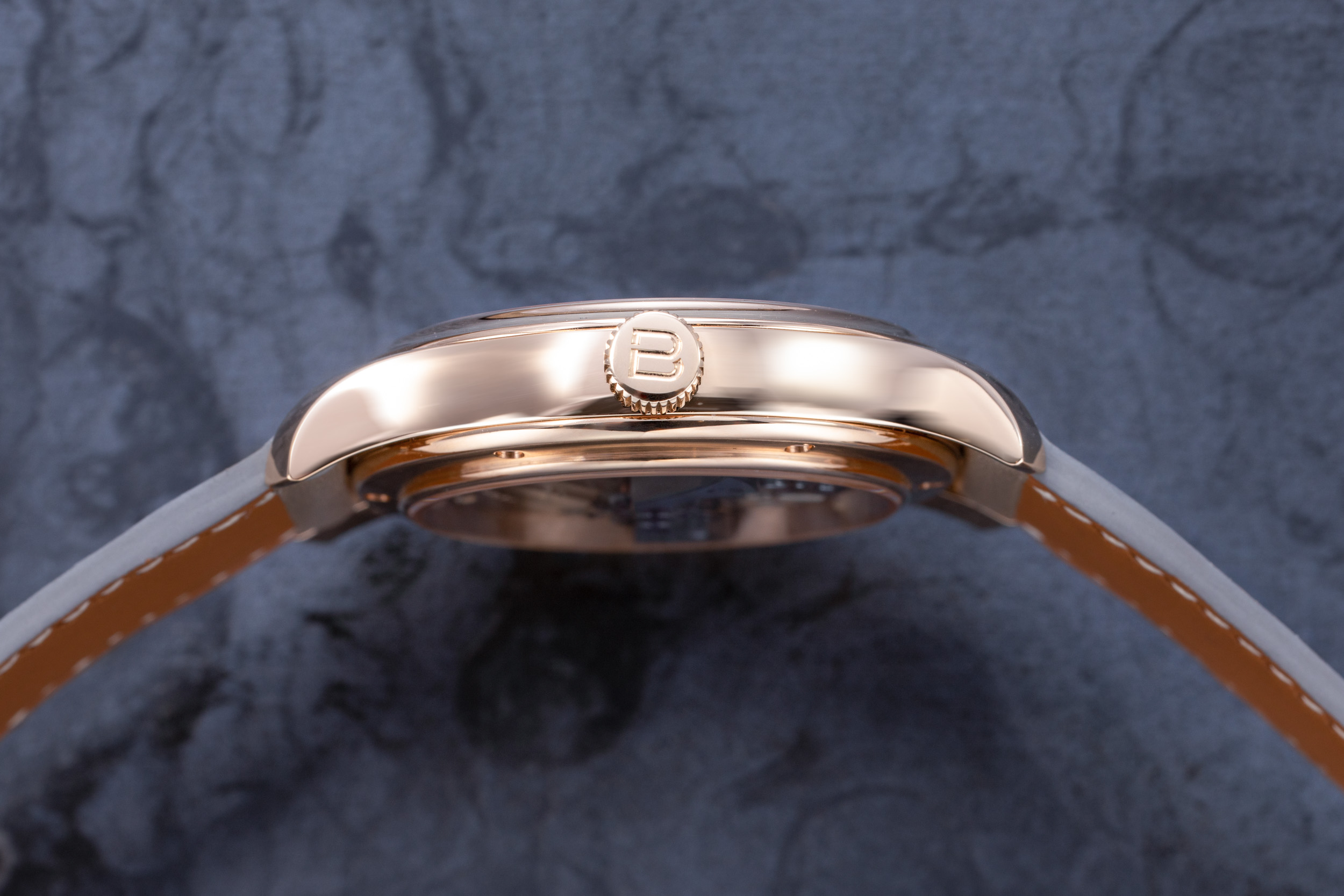
Who are you inspired by and what is your watchmaking philosophy? Both in terms of finishing and mechanics.
Florian: We get a lot of inspiration from Kari Voutilainen, Philippe Dufour and Roger W. Smith. Roger has a YouTube channel where he shows what he does, including case making. It’s incredible! I don’t think we want to make everything here, for me just making the watch is incredible – you will learn so much by doing that, especially during prototyping. When it’s your own watch, you have a completely different vision.
Gaël: Geneva stripes are usually quite small. So the idea in the beginning was to have big bridges to show the Geneva stripes. We first made a big bridge and then thought “ok that’s it, that’s a ¾ plate”. Our intention wasn’t so much to make it look inspired by A. Lange & Söhne though, despite the fact that we have a ¾ plate and used German silver. I think people forget that before there was a German watchmaking industry there was still German silver. When you restore old pocket watches, there’s a lot of movements made with German silver.
During restoration, we often see things and think why this isn’t being done anymore. They paid attention to everything. We said to ourselves we have to do the same for our watches, even if the client will never see that component. We want to have the same mindset that old watchmakers had. We have this opening on the dial – when we decided to include that, we didn’t change anything; the level of finish would have remained the same even if it remained totally hidden from the client.
Of course, we worked for A. Lange & Söhne so we love it! But our main intention was to learn from the past and forge an identity that is unique to us.
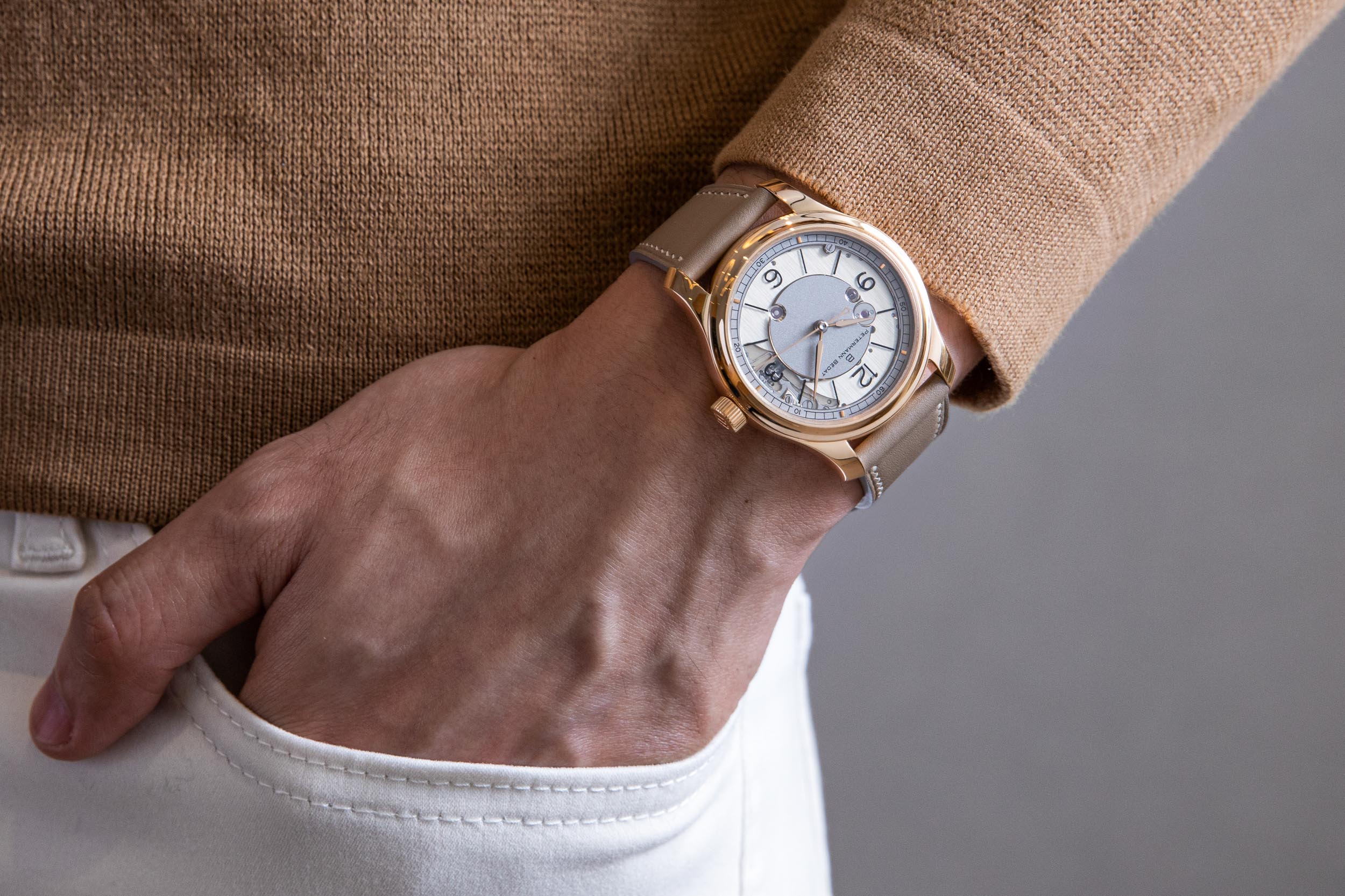
What about the dial and case design?
Gaël: We were inspired by Patek Philippe. When you see the case, there are some similarities between it and the Patek Philippe Reference 2526. The bezel is inspired by the Reference 130 as well. I really love Patek Philippe, and when you work at Christie’s you see a lot of Patek Philippe and Rolex watches. People will buy old watches that they love, but if you’re going to release a watch in 2020 you have to do something different. Sure, you can be inspired by older watches, but you have to change it to make it more modern.
Florian: We also took inspiration from what our teachers taught us in school. The matte finish on the dead-beat seconds bridge is inspired by a few old pocket watches we came across. We found this very interesting and don’t see this on many modern watches.
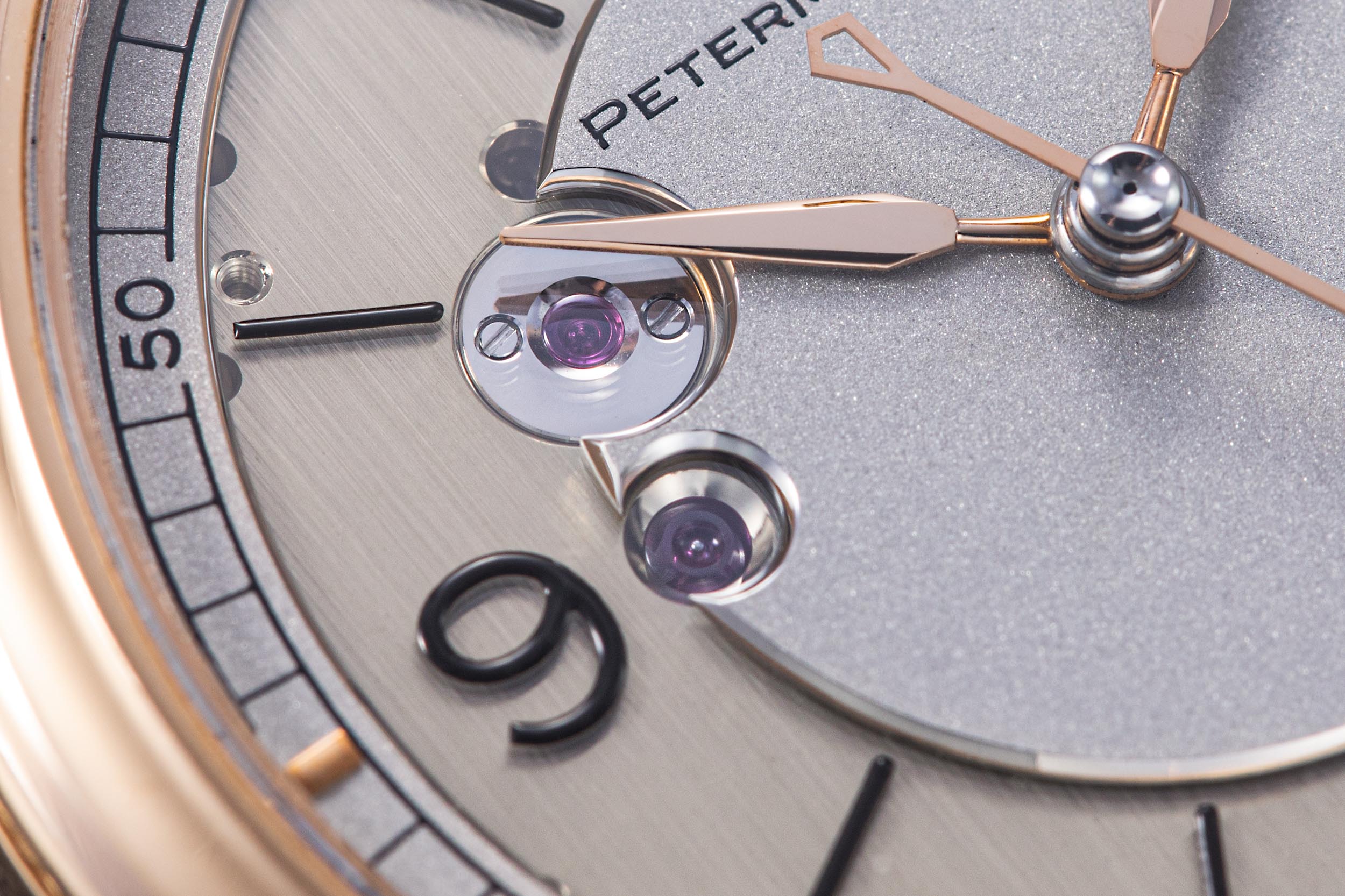
When did the idea come to have a partially open dial?
Gaël: We sent the designer 20 to 30 pictures of dials, indicating what we liked and what we didn’t – I really like sector dials. The designer showed us a few designs and said “we could open the dial here, here and here” but as a watchmaker we don’t always like this sort of design. For example, I really like the Daytona El Primero but I don’t like it when they open the dial just for the balance. Because as a watchmaker you see the balance all day. But then we saw a semi-opened dial and then a design where the opening was just for the jewels and thought that could be good. We we’re ok on the idea initially because the designer has been doing this for 25 years and was confident in the idea. After he made a really nice rendering, we thought “ok this is nice”, and then when we received the dial from Comblémine we knew that’s what we wanted.

Do you plan to offer the Dead-Beat in various case materials?
Gaël: We still want to make other Dead-Beat Seconds but still in a quite small production, we’re open to do an other series. By keeping the production small, we hope that in 20 or 30 years, these watches will become something very special. We have an idea for the next model, and it will have a complication for sure. We want to take older complications and execute them like how we have with the Dead-Beat Seconds – that is to make it clear, simple to read and quite pure in its design.
Florian: It’s very important for it to look modern.

You both come from slightly different backgrounds. Do you debate often? And does this lead to better ideas?
Florian: Yes [laughs]. When the designer showed the first designs, he said to not show it to anyone else because three opinions is already enough! Of course, the three of us had many discussions, and in the end, we found a really good balance. It’s very important that the designer likes and believes in the project. We all trust one another.
Gaël: When you are alone, it is faster because you make the decisions. But for us, we have to convince each other. So, for me I think it’s better to work with a partner, because sometimes I’ll be like we have to do this, do this and do that. And Florian will say, “ok, just calm down and take your time to think about it”. I really like this kind of work because in the end I’m not frustrated about us sometimes having different opinions. This way forces us to take our time to do things properly. It’s working really well.

Florian: Part of the reason we entered into a partnership is because we’ve known each other for a long time and know each other and how we work. We’ve got a really nice balance.
And I’m sure both of you have contributed different things to Petermann-Bédat. Speaking more generally, how would you define the brand DNA?
Gaël: For me, our DNA is not just to make every part useful, but also beautiful. You know like Dufour with the two sharp horns on the main bridge, it’s not there because it’s necessarily useful but because it’s beautiful. I want to do this for all the parts.
Florian: We spend many hours finishing the dead-beat anchor. But we think it’s totally worth it!
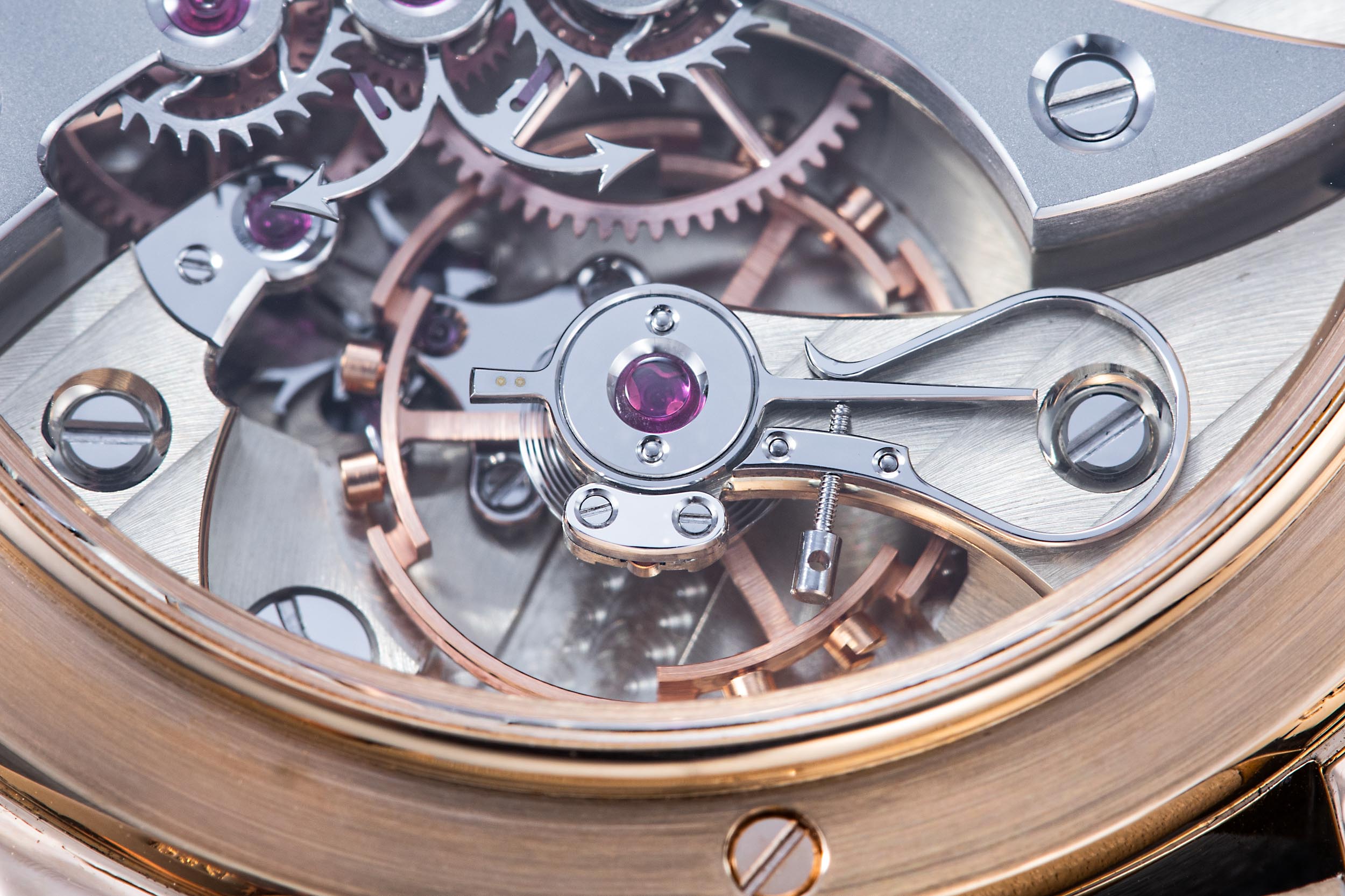
Do you have any advice for young teenagers looking to enter the industry?
Gaël: Today it’s difficult to get a good job in the industry. But if you are motivated it shouldn’t stop you. You don’t need that many tools to get started. You can learn alone or with a teacher, I think that if you are motivated and passionate, there is always a way to learn watchmaking.
Thanks for your time Gaël and Florian.
The Hour Glass represents Petermann-Bédat in Asia.
Interested in the Dead-Beat Seconds? Drop us a line.
